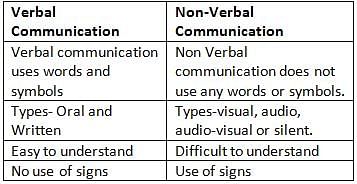UGC NET Paper 1 Mock Test - 5 - UGC NET MCQ
30 Questions MCQ Test UGC NET Mock Test Series 2024 - UGC NET Paper 1 Mock Test - 5
An effective protocol for Blue Baby Syndrome prevention in developing communities with nitrate-contaminated water should prioritize:
Which tools help us to prepare for online classes via video meetings?
A. Zoom
B. Microsoft Teams
C. Skype
D. Webex Meetings
E. Tally
Choose the correct answer from the options given below:
| 1 Crore+ students have signed up on EduRev. Have you? Download the App |
In which of the following arguments the reason is counterbalanced by another reason as per classical Indian school of logic (Nyay)?
(A). All things are non - eternal, because they are knowable.
(B). Fire is cold because it is a substance.
(C). Sound is eternal because it is produced.
(D). Sound is a quality, because it is visible.
Choose the correct answer from the options given below:
Which among the following is a globally recognized online learning platform based in the United States?
What fallacy is committed in the following argument ?
"This girl should come first because she is cute and beautiful"
A teacher's ability to recognize and understand students' emotions and respond in a supportive and empathetic manner is most closely related to which of the following emotionally intelligent behaviors?
Which of the following belongs to the Seven Traditions of Communication as per Robert T. Craig
(A). Experimental
(B). Rhetorical
(C). Semiotic
(D). Phenomenological
(E). Physical
Which of the following psychologists are related to socialization in psychology?
(I) Urie Bronfenbrenner
(II) J.P. Guilford
(III) Alfred Binet
(IV)G. H. Mead
If the average total production of wheat in the years 2022, 2023 and 2024 from Rajasthan is 900 and then find 25% of the total production of wheat in the year 2024 from Rajasthan.
The total production of wheat in the year 2023 from Haryana is how much per cent more/less than the total production of wheat in the year 2022 from Punjab.
Choose the correct statement.
Statement I: A child learns more if be taught by computer only.
Statement II: A child learns more if be taught by the child-centred method.
Which of the following statements is incorrect regarding maintaining hydration?
According to the passage, which of the following health issues can result from severe dehydration?
Which of the given options is least likely to influence a person's hydration needs according to the passage?
Which of the following DTH channels are meant to support and reach those who do not have access to the internet?
Which of the following factors is not a factor that affects mediated persuasion?
1- The source's credibility
2- The message's content
3- The message's presentation
4- The audience's characteristics
Choose the correct answer from the options given below:
What is the importance of Art Education at elementary level in schools?
Which of the following are key objectives of the United Nations Framework Convention on Climate Change (UNFCCC)?
A. Stabilization of greenhouse gas concentrations in the atmosphere
B. Ensuring food security at global level
C. Prevention of ozone layer depletion
D. Assisting developing countries to implement practices to mitigate climate change
E. Promoting the use of fossil fuels in industrial processes
Choose the correct answer from the options given below:
From the list given below, identify the Psychological barriers to communication
(A) Noise
(B) Invisibility
(C) Prejudice
(D) Disinterest
(E) Inattention
Choose the most appropriate answer from the options given below :
Given below are two statements :
Statement I: A presentation is a non-verbal means of communication.
Statement II: Different components of the presentation that attract the attention of the audience are Attention grabbers.
In the light of the above statements, choose the most appropriate answer from the options given below:
|
16 docs|120 tests
|


















